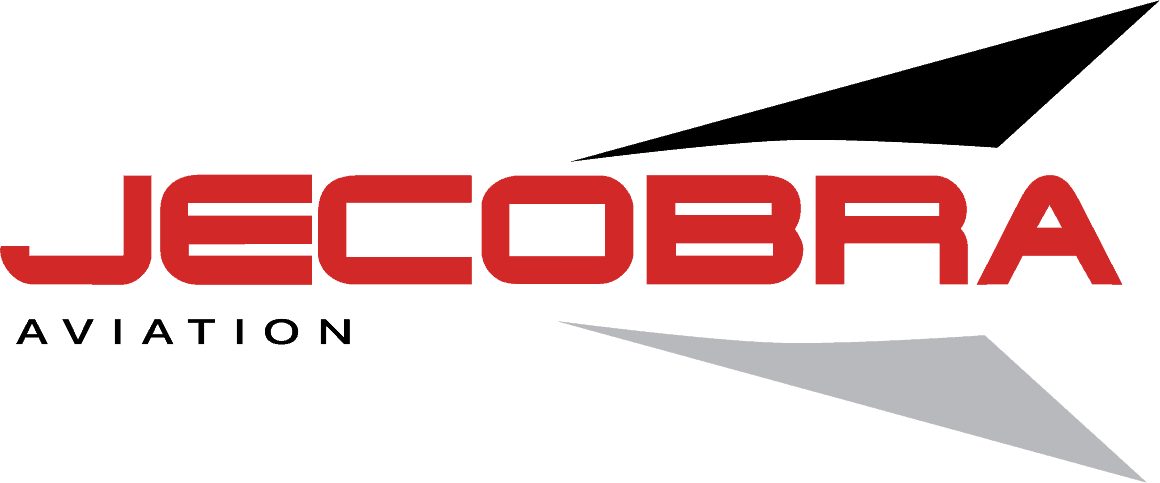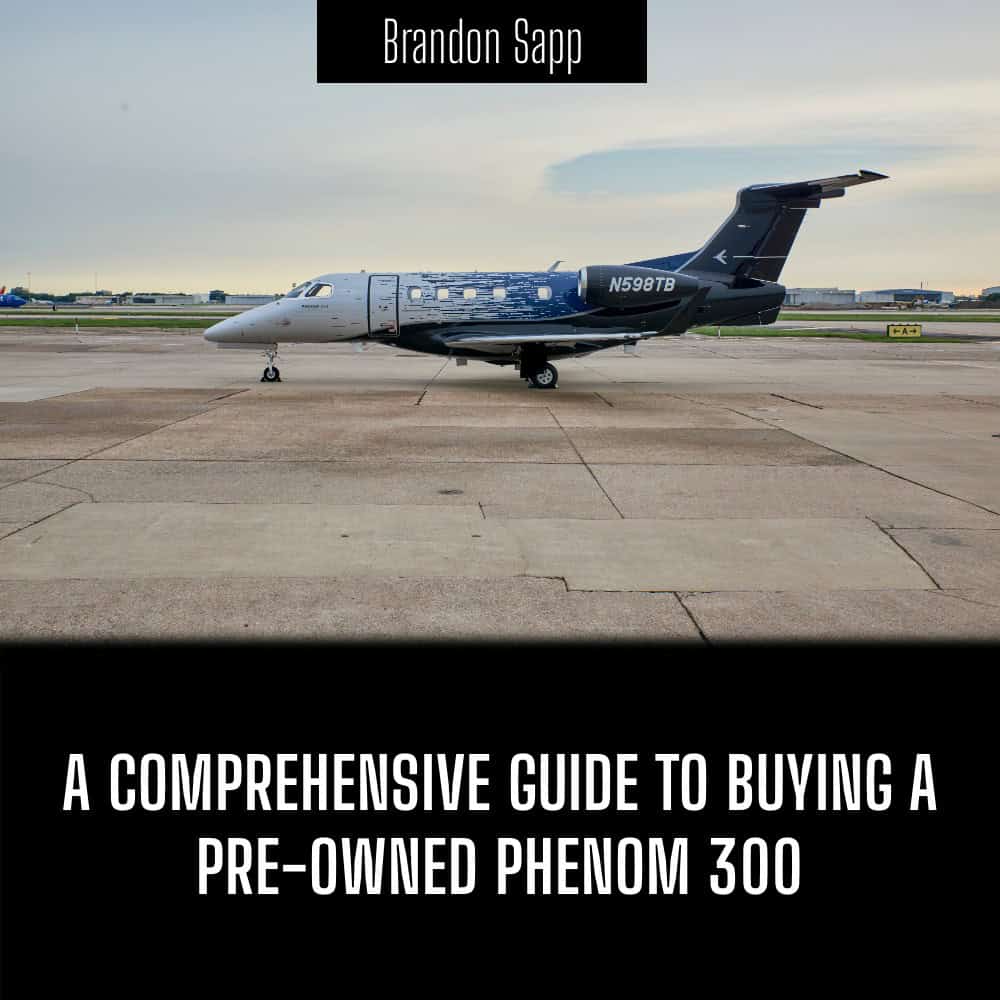The Embraer Phenom 300 has earned its reputation as the world's best-selling light jet for over a decade. Its combination of performance, comfort, economy, and reliability makes it an excellent choice for businesses and individuals seeking a versatile aircraft. If you're considering purchasing a pre-owned Phenom 300, this comprehensive guide will help you navigate the process and make an informed decision.
Why the Phenom 300?
Before diving into the buying process, let's understand what makes the Phenom 300 so popular:
Performance
- Range: Approximately 2,010 nautical miles with four passengers
- Speed: Maximum cruise speed of 453 knots
- Altitude: Certified ceiling of 45,000 feet
- Runway Performance: Excellent short-field capabilities
Comfort
- Seating: Typically configured for 6-8 passengers
- Cabin Dimensions: Class-leading cabin width and height in the light jet category
- Baggage: 84 cubic feet of baggage capacity
- Amenities: Full galley, enclosed lavatory, and modern entertainment systems
Economics
- Operating Costs: Competitive hourly operating costs in its class
- Fuel Efficiency: BMW Rolls-Royce BR710 engines provide excellent fuel economy
- Maintenance: Established maintenance network with competitive costs
- Resale Value: Strong residual values and active resale market
Understanding the Phenom 300 Variants
The Phenom 300 has evolved over its production life:
Original Phenom 300 (2009-2017)
- ProLine 21 avionics suite
- Proven reliability and performance
- Largest pool of pre-owned aircraft
- Generally lower acquisition costs
Phenom 300E (2018-Present)
- Enhanced Avionics: ProLine Fusion avionics
- Improved Performance: Increased range and payload
- Upgraded Interior: New interior design and materials
- Technology: Advanced connectivity and entertainment options
- Premium Pricing: Commands higher prices in pre-owned market
Setting Your Requirements
Before beginning your search, clearly define your needs:
Mission Profile
- Typical Routes: Identify your most common destinations
- Passenger Count: Determine average and maximum passenger needs
- Frequency: Estimate annual flight hours
- Special Requirements: Hot/high operations, international travel, etc.
Budget Considerations
Acquisition Costs
- Original Phenom 300: $6-9 million (varies by age, time, and condition)
- Phenom 300E: $10-15 million for pre-owned examples
- Budget 10-15% above purchase price for transaction costs
Operating Costs
- Direct operating costs: $2,500-3,500 per flight hour
- Fixed annual costs: $500,000-800,000 (including crew, insurance, hangar)
- Consider financing costs if not purchasing cash
Equipment Priorities
Identify must-have vs. nice-to-have equipment:
Essential Items
- RVSM certification
- ADS-B Out compliance
- WAAS/LPV approaches
- Current avionics databases
- Engine health monitoring
Desirable Upgrades
- Enhanced weather radar
- Synthetic vision systems
- Cabin connectivity (Wi-Fi)
- Premium interior materials
- Entertainment systems
The Search Process
Working with a Broker
Benefits of Professional Representation
- Access to off-market opportunities
- Market knowledge and pricing expertise
- Negotiation experience
- Transaction management
- Time savings and efficiency
Choosing the Right Broker
- Phenom 300 experience and transactions
- Industry reputation and references
- Communication style and responsiveness
- Fee structure and services provided
Evaluating Listings
When reviewing potential aircraft:
Basic Qualifications
- Year of manufacture
- Total time and cycles
- Engine programs and status
- Damage and incident history
- Ownership and usage history
Equipment Assessment
- Avionics suite and software versions
- Interior configuration and condition
- Exterior paint rating
- Optional equipment installed
- Compliance with ADs and SBs
Documentation Review
- Logbook quality and completeness
- Maintenance program adherence
- Modification records
- Import/export status if applicable
Due Diligence Process
Once you've identified a candidate aircraft:
Initial Evaluation
Records Review
- Complete logbook analysis
- AD compliance verification
- SB and MOD incorporation review
- Maintenance program assessment
- Service center history
Physical Inspection
- Visual exterior inspection
- Interior condition assessment
- Systems operational check
- Corrosion inspection
- Cosmetic condition evaluation
Pre-Purchase Inspection
Selecting an Inspection Facility
- Phenom 300 expertise essential
- Factory-trained technicians
- Proper facilities and equipment
- References from previous buyers
Inspection Scope
- Complete airframe inspection
- Engine borescope inspections
- Avionics functionality testing
- Flight testing
- Systems operational verification
- Corrosion and structural inspection
Common Findings
- Interior wear and tear
- Minor cosmetic issues
- Deferred maintenance items
- Software/database updates needed
- Landing gear and brake status
Title and Registration
Title Search
- Verify clean title
- Check for liens or encumbrances
- Confirm ownership chain
- Review registration status
Registration Considerations
- U.S. N-registration vs. international
- Trust or corporate registration
- Import/export requirements if applicable
Negotiation and Purchase
Price Negotiation
Understanding Value
- Compare to similar aircraft sales
- Adjust for equipment differences
- Consider time, condition, and records
- Factor in required immediate maintenance
Negotiation Strategies
- Base offers on objective data
- Address inspection findings fairly
- Consider creative deal structures
- Maintain positive relationship with seller
Purchase Agreement
Key Terms
- Purchase price and deposit
- Acceptance conditions
- Warranty provisions (if any)
- Closing timeline
- Risk of loss provisions
Contingencies
- Satisfactory pre-purchase inspection
- Clean title verification
- Financing approval (if applicable)
- Insurance availability and pricing
Closing the Transaction
Final Steps
Pre-Closing Activities
- Final title verification
- Insurance binding
- Financing closing (if applicable)
- Registration preparation
- Acceptance test flight
Closing Documentation
- Bill of sale
- Registration application
- Release of liens
- Closing statement
- Delivery acceptance
Post-Purchase Considerations
Immediate Actions
- Establish insurance coverage
- Set up maintenance tracking
- Implement operations manual
- Crew training and type rating
- Initial operational procedures
Long-Term Planning
- Maintenance program selection
- Crew and staffing
- Hangar and operational base
- Budget and financial tracking
- Operational policies and procedures
Common Pitfalls to Avoid
Rushing the Process
- Take time for thorough due diligence
- Don't skip the pre-purchase inspection
- Verify all representations and documentation
- Understand all costs, not just purchase price
Ignoring Total Cost of Ownership
- Factor in all operating and fixed costs
- Consider upcoming maintenance events
- Budget for unexpected repairs
- Plan for avionics and equipment updates
Inadequate Professional Support
- Use experienced aviation professionals
- Don't rely solely on seller representations
- Engage qualified legal counsel
- Work with aviation-specific insurance brokers
Overlooking Operational Planning
- Plan crew and pilot requirements
- Establish maintenance relationships
- Set up operational infrastructure before purchase
- Understand regulatory requirements
Why Choose Jecobra Aviation?
When you work with Jecobra Aviation for your Phenom 300 acquisition:
Expert Guidance
- Deep Phenom 300 market knowledge
- Access to comprehensive market data
- Experience with dozens of Phenom transactions
- Understanding of variant differences and values
Comprehensive Service
- Complete market search (listed and off-market)
- Professional records review and analysis
- Pre-purchase inspection coordination
- Expert negotiation representation
- Full transaction management
Industry Relationships
- Established connections with sellers and brokers
- Relationships with qualified inspection facilities
- Access to financing and insurance resources
- Network of operational support providers
Client Advocacy
- Represent your interests exclusively
- Transparent communication throughout
- No hidden fees or surprises
- Long-term relationship focus
Conclusion
Purchasing a pre-owned Phenom 300 represents a significant investment and important decision for any business or individual. The aircraft's outstanding capabilities, proven reliability, and strong market presence make it an excellent choice. However, success requires careful planning, thorough due diligence, and expert guidance.
At Jecobra Aviation, we've helped numerous clients successfully acquire Phenom 300 aircraft. Our expertise, market knowledge, and commitment to client success ensure you make an informed decision and complete a smooth transaction.
Ready to begin your Phenom 300 acquisition journey? Contact our team today for a confidential consultation and personalized market analysis.
Contact Jecobra Aviation
- Phone: (830) 362-1150
- Email: info@jecobra.com
- Web: https://jecobra.com
About the Author

Brandon Sapp
Managing Partner
Founder and Managing partner of Jecobra Aviation with 10,000+ hours of flight time and 25 years experience in aircraft sales, acquisitions, management and operations. Brandon brings unparalleled expertise in helping clients navigate complex aircraft transactions.

